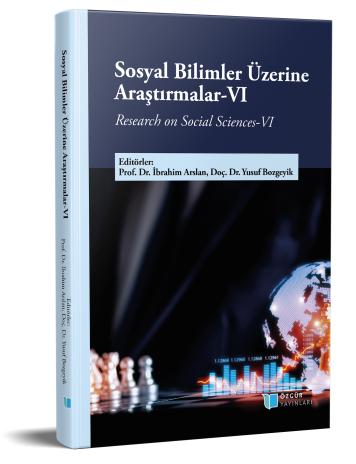
Sayısallaştırılmış SWOT Analizi: Bulanık Analitik Hiyerarşi Prosesi Uygulaması
Şu kitabın bölümü:
Arslan,
İ.
&
Bozgeyik,
Y.
(eds.)
2023.
Sosyal Bilimler Üzerine Araştırmalar- VI.
Özet
Günümüzde artan rekabet ortamında varlıklarını sürdürebilmek işletmeler için giderek zorlaşmaktadır. Bu durumda stratejik hedeflerini sağlıklı belirleyebilen ve değişen çevre koşullarına göre eylemlerini planlayan örgütler ancak sürdürülebilirliklerini sağlayabilmektedir. Stratejik yönetim sürecinde örgütler bir bütün olarak ele alınmakta ve örgütü oluşturan alt birimlerin hedefleri örgütün hedefleriyle uyumlu, eş güdümlü ve destekleyici olmak zorundadır. Bu yaklaşım alt birimlerdeki kendini en iyileme güdüsünü baskılayarak örgüt bütününün en iyilemesi için alt birimler arasında uyumu ön plana çıkmaktadır. Bu sürecin etkinliğini arttırmaya yönelik olarak bu çalışmada, stratejik yönetimin temel araçlarından SWOT analizi sayısallaştırılmıştır. Sayısallaştırmada Analitik Hiyerarşi Prosesi (AHP) yönteminin bulanık ve tereddütlü bulanık uygulamaları kullanılarak analizde yer alan faktörlerin önem düzeylerinin belirlenmesi ve bu faktörlerin önerilen projelerle etkileşiminin analitik olarak değerlendirilmesi gerçekleştirilmiştir. Bu yöntemler kullanılarak gerçekleştirilen uygulama çalışmasıyla SWOT analizinde örgütün geleceğini etkileyecek içsel ve dışsal faktörlerin karar verme sürecinde etkin kullanılmasının mümkün olabileceği gösterilmiştir. Ayrıca, yöntemin Hatay ili Antakya ilçesi mobilya sektöründe uygulanmasıyla, sektörün gelişmesi ve artan rekabet ortamında etkin ve etkili bir konum alabilmesi için önerilen projelerin SWOT analizi faktörleri odağında öncelik sıralaması belirlenerek karar verme sürecine katkı sağlanması amaçlanmıştır. Bu çalışmada uzman değerlendirmelerindeki belirsizlik ve kararsızlık durumlarını dikkate alabilmek için Bulanık AHP ve Tereddütlü Bulanık AHP yöntemleri kullanılmıştır. Yapılan analizde SWOT faktörleri iki yönteme göre sayısallaştırılmış ve önerilen projeler SWOT faktörleriyle ilişkilendirilerek iki yönteme göre öncelik sıraları belirlenmiştir. Sonuç olarak iki yöntem karşılaştırıldığında elde edilen sıralamanın tutarlı olduğu tespit edilmiştir.

